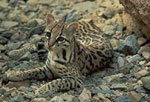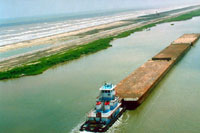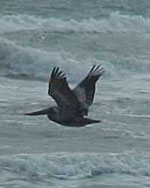|
Human Pressures
The most important human impacts on this region over the past 30 years
have been:
 - water diversion and flood-control projects; - water diversion and flood-control projects;
- brush land clearing;
- pollution;
- continued dredging of the intracoastal waterway; and
- pressures from population growth.
 The
lower Laguna Madre, for instance, has lost about 60 square miles of
sea grass cover due to reduced water clarity since the 1960s. Extensive
agriculture has fragmented and reduced the areas of native terrestrial
ecosystems. And both the northern and southern ends of Padre Island have
been developing rapidly as resort and residential real estate. In
addition, the large number of people now living in "colonias" without
sewage treatment contributes to the contamination of ground and surface
waters and poses a human health problem. This is worsened by untreated
wastewater from Mexican municipalities released into the Rio Grande. The
lower Laguna Madre, for instance, has lost about 60 square miles of
sea grass cover due to reduced water clarity since the 1960s. Extensive
agriculture has fragmented and reduced the areas of native terrestrial
ecosystems. And both the northern and southern ends of Padre Island have
been developing rapidly as resort and residential real estate. In
addition, the large number of people now living in "colonias" without
sewage treatment contributes to the contamination of ground and surface
waters and poses a human health problem. This is worsened by untreated
wastewater from Mexican municipalities released into the Rio Grande.
In addition to human impacts, parts of the Rio Grande watershed have
experienced severe drought since 1993, and low flow has exacerbated
water quantity and quality problems. Also, a lengthy, unprecedented
brown tide (a type of toxic algal bloom) has persisted in the Laguna
Madre since 1990.
Future changes
 Global
warming will compound these human pressures on Laguna Madre, in some
cases improving, in others cases worsening the situation. For example,
if future climate change brings a prolonged and more intense wet season
in this region, the reliability of rainfall and soil moisture could
improve. In wet periods, the land can retain rainfall and runoff, so
wildlife and native plants increase their productivity, and the lagoon's
salinity is moderated. Global
warming will compound these human pressures on Laguna Madre, in some
cases improving, in others cases worsening the situation. For example,
if future climate change brings a prolonged and more intense wet season
in this region, the reliability of rainfall and soil moisture could
improve. In wet periods, the land can retain rainfall and runoff, so
wildlife and native plants increase their productivity, and the lagoon's
salinity is moderated.
If rainfall decreases in the future, however, a relatively small
reduction in moisture could lead to increased desertification. Moreover,
all types of coastal wetlands in Texas would decline with less
freshwater delivery to the estuaries, thus worsening wetland losses
already occurring. Over the long term, such coastal wetland losses would
diminish estuarine-dependent fisheries.
Warmer winters are especially important from an ecological point of
view. A northward shift of the freeze line would bring dramatic effects
to the Coastal Bend and upper Laguna Madre, allowing southerly plant and
animal communities to expand northward and, due to fewer disturbances
from frost, mature and develop different ecosystems over time.
Laguna Madre landscape (1), J. W. Tunnell, Texas A&M
University-Corpus Christi
Laguna Madre landscape (2), J. W. Tunnell, Texas A&M
University-Corpus Christi
Sea Turtle, U.S. Geological Survey
Ocelot, U.S. Fish and Wildlife Service
Gulf Intracoastal waterway, U.S. Army Corps of Engineers Photo
Library
Black pelican flying, National Park Service
|